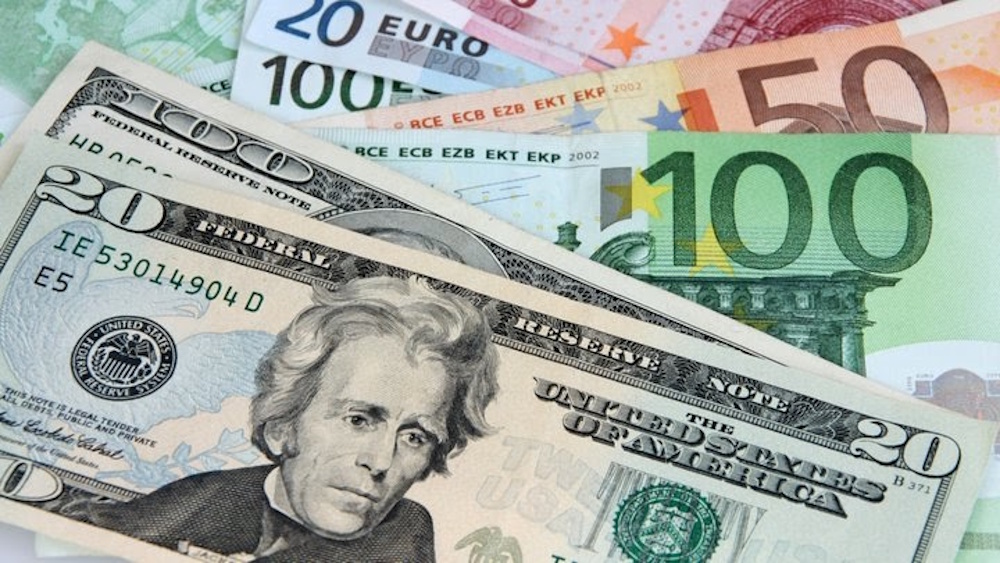The EUR/USD pair experienced a notable increase, approaching 1.1575, marking its peak since late October. This movement coincided with a significant decline in the U.S. Dollar Index, which fell to 99.85 due to disappointing American labor data and growing fiscal stagnation in Washington. Market participants are adjusting their expectations regarding the Federal Reserve’s trajectory, as the likelihood of a rate cut in December has surged past 67%. This shift follows the announcement that U.S. companies shed 153,000 jobs in October, representing the most significant drop in over twenty years. The market response was swift: Treasury yields declined, the dollar weakened, and euro buyers re-entered the market with vigor after maintaining support in the 1.15–1.1525 range over the week. The U.S. shutdown, now recognized as the longest in history, has significantly hindered official data collection, compelling investors to depend on private sources such as the ADP and Challenger reports. These datasets, previously considered secondary, now significantly influence substantial FX volatility. The Challenger survey’s 183% month-over-month spike in layoffs sparked panic that the U.S. labor slowdown may morph into a full-scale employment crisis. The recent shift eliminated the remaining signs of dollar strength that had developed earlier in the week following a robust ISM Services PMI report. Meanwhile, the Michigan Consumer Sentiment Index fell to 50.3, significantly underperforming the anticipated 53.2, indicating a sharp decline in household confidence. The combination of these shocks dismantled the Fed’s “higher for longer” narrative and reignited discussions regarding a potential policy pivot in December.
The European Central Bank has projected a tone of cautious confidence. Christine Lagarde and other policymakers reiterated that rates are “sufficiently restrictive,” indicating that no easing is expected in the near term. The disparity in policy between a progressively dovish Fed and a stable ECB is currently the primary driver of the EUR/USD recovery. The pair’s structure has transitioned from capitulation to accumulation, as euro demand increases whenever the dollar falters on underwhelming macroeconomic data. The ECB’s deposit rate at 4.00% continues to serve as a crucial support for the euro’s carry attractiveness, while the cooling of euro-area inflation to 2.6% YoY has enabled Frankfurt to sidestep the panic that persists in Washington. The macro divergence has strengthened the euro’s resilience, as capital flows are shifting back to European assets amid the compression of U.S. yields. The daily chart’s technical configuration indicates that the EUR/USD has broken out of its descending channel, which commenced in mid-September when the pair reached a peak around 1.1918. Following a decline to a three-month low of 1.1468, the recovery from the lower boundary has been robust. The 21-day SMA is positioned at 1.1590, while the 50-day and 100-day SMAs are converging around 1.1665–1.1670, establishing the next significant resistance level. The pair’s close above the 21-SMA indicates a resurgence of bullish sentiment. Immediate resistance is identified at 1.1600, with subsequent resistance at 1.1655 (0.618 Fibonacci). Support remains robust at 1.1525, aligning with the 38.2% retracement and the lower channel boundary.
Momentum indicators are showing positive developments: the RSI has increased from 41 to 49, indicating a potential conclusion to the oversold conditions, while the MACD is approaching a bullish crossover. A confirmed daily close above 1.1600 would indicate a structural shift, aiming for targets of 1.1700 and 1.1820, levels that have not been observed since July. The correlation metrics between Fed rate-cut expectations and EUR/USD movements currently stand at +0.9, marking the strongest relationship observed in over a year. Every 10-basis-point rise in anticipated rate cuts has been linked to an approximate 0.004–0.006 points increase in EUR/USD, illustrating the close relationship between the euro’s performance and adjustments in U.S. policy. The decline of the DXY from 100.65 to 99.81 underscores this sensitivity. Traders who overlooked second-tier data now understand that with official releases halted, any unexpected findings from private surveys quickly impact FX markets. Statements from Alberto Musalem and Austan Goolsbee highlight an increasing divergence within the Fed. Musalem cautioned that inflation driven by tariffs could continue into early 2026, while Goolsbee highlighted the need for caution in light of data blackouts. The market views this as uncertainty rather than control, resulting in a decrease of the two-year Treasury yield to 4.14%, down from 4.29% earlier in the week. The compression of real yields directly increases the appeal of gold and the euro, diminishing the relative carry advantage of the dollar.
Political dysfunction continues to pose a significant challenge to the Greenback. The prolonged shutdown, coupled with the impasse regarding spending authorization, is prompting alerts from rating agencies. If the stalemate continues, credit risk premiums may increase, leading to a further depreciation of the dollar. Euro traders perceive this as a structural opportunity; while the U.S. faces potential self-inflicted fiscal harm, the eurozone’s commitment to deficit discipline and stable bond spreads between German Bunds and Italian BTPs (currently near 131 bps) help maintain regional risk at manageable levels. Institutional data indicate a resurgence in speculative buying of the euro. The CFTC positioning has shifted from a net short of -28,000 contracts three weeks ago to a current position of -7,000, indicating significant short covering activity. The average daily trading volume for EUR/USD reached $1.5 trillion, representing approximately 30% of global FX activity, thereby reaffirming its leading position in terms of liquidity. Banks are currently quoting tighter spreads, which suggests a rise in confidence and a transition from defensive trading to accumulation strategies.

